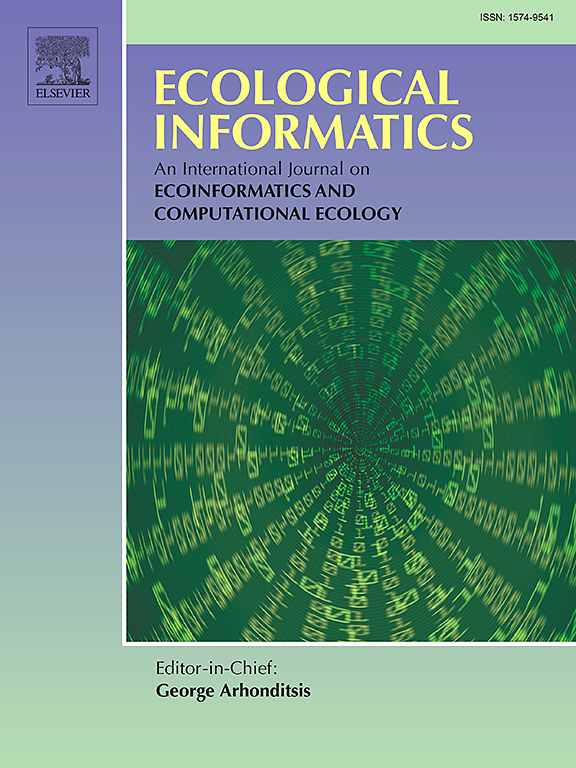利用神经风格转移研究动物信号设计的进化:装饰鱼的案例研究
IF 5.8
2区 环境科学与生态学
Q1 ECOLOGY
引用次数: 0
摘要
动物信号进化的感觉驱动假说描述了动物的通讯信号和偏好是如何进化为适应当地环境的。检验这一假说的经典方法通常侧重于对信号某一方面的偏好,而深度学习技术(如生成模型)可以在不针对特定特征的情况下创建和操纵刺激。在这里,我们使用了一种名为神经风格转移的人工智能技术,通过实验测试鱼类对颜色图案的偏好。实证美学的研究结果表明,人类倾向于偏好具有环境视觉统计特征的图像,因为视觉系统适应于高效处理这些图像,从而使这些图像更容易处理。其他物种是否也是如此,还有待检验。因此,我们使用神经风格转移(NST)算法来操纵雄性身体图案与其栖息地的相似或不相似程度。我们预测,身体形态与其原生栖息地更相似的雄性会受到同种动物的青睐。我们的研究结果表明,雄性和雌性对栖息地一致性的偏好都很敏感,但敏感程度不同,需要进一步研究。尽管如此,这项研究还是展示了人工智能在检验动物交流信号假设方面的潜力。本文章由计算机程序翻译,如有差异,请以英文原文为准。
Using neural style transfer to study the evolution of animal signal design: A case study in an ornamented fish
The sensory drive hypothesis of animal signal evolution describes how animal communication signals and preferences evolve as adaptations to local environments. While classical approaches to testing this hypothesis often focus on preference for one aspect of a signal, deep learning techniques like generative models can create and manipulate stimuli without targeting a specific feature. Here, we used an artificial intelligence technique called neural style transfer to experimentally test preferences for color patterns in a fish. Findings in empirical aesthetics show that humans tend to prefer images with the visual statistics of the environment because the visual system is adapted to process them efficiently, making those images easier to process. Whether this is the case in other species remains to be tested. We therefore manipulated how similar or dissimilar male body patterns were to their habitats using the Neural Style Transfer (NST) algorithm. We predicted that males whose body patterns are more similar to their native habitats will be preferred by conspecifics. Our findings suggest that both males and females are sensitive to habitat congruence in their preferences, but to different extents, requiring additional investigation. Nonetheless, this study demonstrates the potential of artificial intelligence for testing hypotheses about animal communication signals.
求助全文
通过发布文献求助,成功后即可免费获取论文全文。
去求助
来源期刊

Ecological Informatics
环境科学-生态学
CiteScore
8.30
自引率
11.80%
发文量
346
审稿时长
46 days
期刊介绍:
The journal Ecological Informatics is devoted to the publication of high quality, peer-reviewed articles on all aspects of computational ecology, data science and biogeography. The scope of the journal takes into account the data-intensive nature of ecology, the growing capacity of information technology to access, harness and leverage complex data as well as the critical need for informing sustainable management in view of global environmental and climate change.
The nature of the journal is interdisciplinary at the crossover between ecology and informatics. It focuses on novel concepts and techniques for image- and genome-based monitoring and interpretation, sensor- and multimedia-based data acquisition, internet-based data archiving and sharing, data assimilation, modelling and prediction of ecological data.
 求助内容:
求助内容: 应助结果提醒方式:
应助结果提醒方式:


